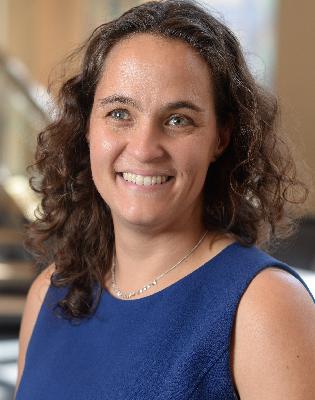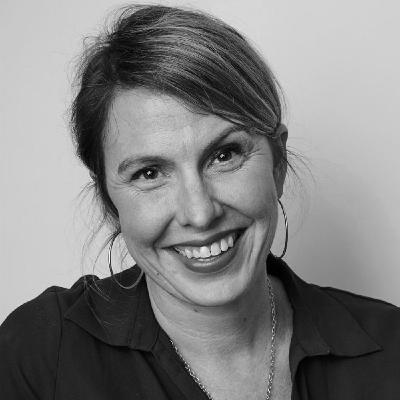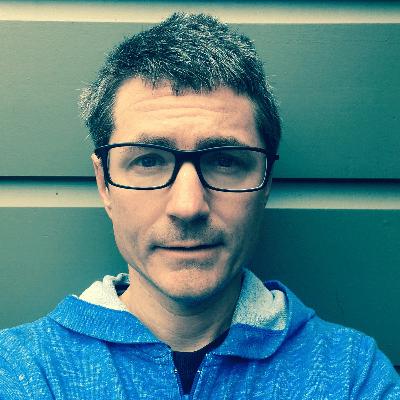43: Leading Enterprise UX for LEGO Group (ft. Rebecca Nordstrom)
Description
Transcript
[This transcript is auto-generated and lightly edited. Please forgive any copy errors.]
Jesse: I’m Jesse James Garrett,
Peter: and I’m Peter Merholz.
Jesse: And we’re finding our way,
Peter: Navigating the opportunities
Jesse: and challenges
Peter: of design and design leadership,
Jesse: On today’s show, one of the largest scale and highest precision plastics manufacturing operations in the world belongs to Denmark’s LEGO Group. LEGO’s Rebecca Nordstrom leads the team designing the software they use to produce those billions of little bricks. She joins us today to talk about bringing UX to the factory floor, measuring success when user adoption is mandatory, and the differences between leading design in North America and in Europe.
Peter: Thank you so much, Rebecca, for joining us today.
Rebecca: Thank you for having me.
Peter: Typically we start our conversations with a very easy question, which is: who are you and what do you do? What’s your job? What’s your role? Tell us a little bit about yourself.
Rebecca: Yep. So I am the head of digital product design for our area inside of digital technology inside of the larger LEGO Group. So, LEGO Group is a little bit of an onion organization, if you will, and inside that we have digital technology, which is responsible for all of the external digital tools that our customers and play experiences support, but also we have a lot of internal. And then I am in charge of a digital product design team of around 20 folks and we are primarily supporting internal-facing applications. So, these are supply chain and manufacturing. So it’s a little bit of a different flavor. And I hope that listeners are not disappointed that we’re not going to talk about the fun LEGO play experience. But I think we really do some fabulous work where it is focusing on enterprise design work, supporting folks in the factories, folks in supply chain, and it’s a lot of really tricky, complex problems. But we also get to deal with a lot of kind of cutting edge technology and the things that we interact with, which is really fun.
Peter: You mentioned the factory and supply chain, like I’m assuming there’s like internal design and development. What’s your relationship to that, if anything?
Rebecca: Yeah. So for the internal design and development, we have product teams, and my team is the design resource into those product teams. And then we have product managers, which sit on the business side. And then we’ve got engineers inside those product teams as well, which sit kind of in the same area as me in digital technology.
So, the product teams straddle both sides of the organization, if you will, and then they are dedicated into kind of user group areas within LEGO. So we have a product team, for example, all around packing. And so that is supporting all of the packing functions that help produce the finished LEGO good that leaves. Yep. I don’t know, I feel like, I feel like the stuff that happens behind the scenes in large organizations like LEGO is like this hidden gem that nobody really ever talks about or looks at, but there’s so much interesting things and like fantastic work happening there.
Design for Internal Tools
Peter: What’s the top thing that no one knows about that you wish they did?
Rebecca: I think one is that we, we strive to create those play experiences for our internal employees inside LEGO as well. So even the factory workers should get that fun, enjoyable experience because we have that people promise to them. So we are creating, you know, polished end products, even with like the little microinteractions and animations and all of those things into it, for the factory workers.
And I think that’s something that, unless you really, like, pull back the cover, you would never know that about LEGO. And we do that in a lot of organizations, actually, not just LEGO, but I think we have a high promise to our employees in that way.
Jesse: it’s fascinating to think about the tension between playful experiences and supply chain and manufacturing logistics. And so I am curious about how products even get conceptualized in an environment like that. I feel like a traditional, kind of, requirements definition approach is not going to quite capture it for you guys, right?
Rebecca: Yep, so typically we are approached with a business problem that needs solving. Either that we need to cut down the cost for manufacturing the finished good, that’s the one that we are constantly kind of battling year over year, because we always need to drive down cost, right?
And so then what we do is we work with business.
So the designers will go out and start researching with business on the processes that they’re involved in and start to identify different areas where we can change the process, and so, in that way, a lot of time, we’re not doing kind of traditional digital design in that way, but it’s really looking at end to end process, and how do we redesign the entire process and experience that we’re supporting in the shop floor. And how can digital tools play a role in that, and then working together with business to kind of tear that apart and put it back together.
Jesse: I imagine that entails a different kind of a partnership with the business than you might see in other places. Because you need that deep process expertise at the table, right?
Rebecca: Yep, so we have designers embedded into the product team. So they’re not, we don’t work as a agency or consulting centralized team. We’re embedded into the product teams, and in those then the designers over time are getting those relationships with all of the stakeholders in the business, but they’re also getting a lot of domain knowledge in there.
So you can go in and talk to the designer that’s working in the molding area and ask her about all of the different settings and all of the processes to do with like molding and manufacturing. And by the way, LEGO is the largest producer of tires in the world. If you don’t know that. So like we are, we are a massive manufacturing company actually, and that’s kind of at heart of what everything does.
And so the designers really deeply know those areas and those processes, and they are experts in their own way of that. But also you need that expertise to be able to talk to business about it too, because it’s not, it’s not an app for buying a cup of coffee where it’s super relatable,
Jesse: Mm hmm.
Rebecca: it’s getting into these really complex and engineering-focused processes. And so you have to be able to speak a bit of the language with the users for them to trust you and to open up.
Peter: Nothing against apps for buying cups of coffee.
Rebecca: No, those are, those are wonderful too, but I think, I think it’s like a totally different end of the spectrum of like what we deal with. Yeah.
Peter: I’m wondering then, as you’re looking to build your team, right? Because you’ve had looking at your LinkedIn, I’ve seen you’ve had jobs in corporate America. I don’t know exactly… I saw Capital Group and Kaiser Permanente, so large legacy organizations. Then you’re now at LEGO. You’re working in this really specialized environment, like, like an uncommon one.
Hiring for specialized environments
Peter: Not that many people are probably working on the design of manufacturing and supply chains. And I’m wondering how that, that has caused you to shift how you approach recruiting and hiring, or your orientation on skills. Like what is it you’re looking for in building your team that might’ve been different than the kinds of things you were considering in the past.
Rebecca: Yeah, I think one is, people that really fall in love with the problem, right? So it’s not people that are super focused on the solution all the time, but that can really fall in love with the problem. So they are willing to spend time investigating that problem, spend time understanding it, and really understand all of the, the nuances and edges to the problem.
So we get these like really crazy wicked problems of… you have all of these VPs and stuff and they’re looking at it and they’re like, we don’t know what to do. And then we get some of the design team in there. And so they need to fall in love with that problem as number one and really enjoy that it is complex.
And you’ve got some really amazing designers that that is their sweet spot. They don’t, they don’t want the, the easy showy stuff. They want the stuff where they know this is going to take a bunch of iterations to really smooth this out and understand where the places that we can move and where are the places that we can’t move.
So I think it’s, it’s that problem that’s number one and then the other one is just really strong collaboration skills, because part of what we also face on a regular basis is the change management portion of design as well. So for like consumer-facing things, you can kind of release it. And then























